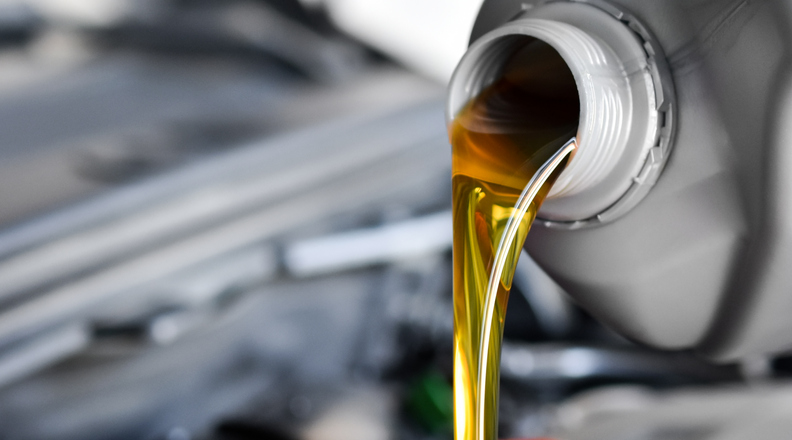Engineers seek to continually enhance performance and increase the efficiency of machines and engines. A key piece of their research goes into the design and creation of blended lubricants. Lubricants are needed to allow parts to move freely and protect internal components, contributing significantly to their durability and longevity. Therefore, it becomes essential that your blended lubricants meet strict quality standards.
Quality Management System, Explained
Quality is a word that is so often overused that it is frequently overlooked or misunderstood. There is an expectation that the blended lubricants you receive will meet your specifications. Quality that meets expectations should be a given, delivered without question or discussion. Sadly, this is not always the case. Lubricant marketers should target blenders that have standard-driven blending processes in use.
Quality assurance (QA) is part of a quality management focus by providing confidence that quality requirements will be fulfilled. QA is an encompassing framework that centers around preventing quality issues while continuously improving processes. It may include staff training and performance monitoring, a chain of custody, process validation, equipment function checks, statistical process controls, calibrations, procedures and work instructions, internal audits, document controls, or any number of other elements designed to maintain a quality standard. QA creates a foundation for assessing risks and opportunities (through preventative actions) within the quality system.
A contract blender can’t know they have met a customer’s requirements unless they are measuring results. This is where quality control (QC) comes in. Quality control is designed to demonstrate quality by detecting non-conformance. A sampling plan is generally agreed upon to determine how lubricants are tested for conformance. QC data feeds into QA processes. If a product is out of spec, QA processes may need to be evaluated, and corrective action is taken.
Blended Lubricants Require a Quality System
Much more goes into blending lubricants than mixing additives and base oils. High-quality ingredients, the correct equipment, proper procedures, standardized testing, and a trained and knowledgeable workforce are all required to package high-quality blended lubricants. Incorporating these into a quality system with effective management and controls will ensure lubricants meet customer requirements.
Lubricants, such as motor oils, hydraulic oils, or transmission fluids, are used across a variety of industries, including automotive, construction, steel, and more. They serve many functions, including reducing surface friction, temperature control, and preventing corrosion. This broad use has led to a wide number of formulations with varying complexity. Because of these, a trained a knowledgeable workforce is required.
The quality of the raw materials is essential. As the adage goes, “garbage in, garbage out.” A high-performance lubricant will require higher-quality raw materials than standard performance lubricants. Precisely controlled quantities of ingredients are necessary, and oils and additives must be compatible. Again, this is where the blender’s expertise, knowledge, and QA/QC programs come in.
The finished product must be tested to ensure it meets requirements. The testing may vary by the customer but will likely include viscosity, cold crank, and impurity measurements. Lubricant viscosity is important because if it is too high, it may not flow well, especially in cold conditions, and if it is too low, it may not sufficiently coat the components. As such viscosity of oil affects heat generation in gears, bearings, and cylinders, governs the sealing effect of oils, and can impact oil consumption.
Kinematic viscosity is measured to ensure compliance. It is the ratio between momentum transport and momentum storage. Essentially, it measures a fluid’s internal resistance to flow under gravitational forces at a controlled and known temperature. As standardized testing is a critical component of QC, industry standard ASTM D455, Standard Test Method for Kinematic Viscosity of Transparent and Opaque Liquids (and Calculation of Dynamic Viscosity), is used to ensure consistency and repeatability in testing.
Another viscosity test that may be performed is ASTM D5293, Standard Test Method for Apparent Viscosity of Engine Oils and Base Stocks Between –10 °C and –35 °C Using Cold-Cranking Simulator. This test uses a simulator to determine the low-temperature performance of the lubricant.
Various other tests may be performed. However, when a contract blender has a quality system, follows standard test methods, and the experience using both, you will see greater consistency and higher quality outcomes.
We Put Quality First at Crystal Packaging
As an experienced lubricant blender, we have a quality management system and processes to ensure your lubricants meet your expectations. Our onsite chemical testing lab has extensive capabilities to meet your goals. We offer rigorous testing, including x-ray fluorescence (XRF), which can detect trace elements in the lubricant blend, performed by dedicated laboratory scientists and technicians. We test the raw materials, the lubricant after blending, and the lubricant before shipping.
Another way we go further to provide a high-quality product is by warm blending. The components are warmed before addition, and the tank is kept warm during blending. We are the only blender in the area that does this, but we believe it produces a better quality product that experiences less additive fallout and a longer shelf-life.
As established experts in lubricant blending, we have trusted relationships with some of the leading petrochemical, aviation, automotive, and fuel companies. Whether you need toll blending or contract packaging (including an H3 area), we can support your production demands and deliver the quality you expect. We also maintain a range of industry certifications that hold us to the highest standards in manufacturing excellence. These include GMP, ECOCERT, and Safer Choice Standard accreditations. We also hold an EPA registration for the production of disinfectants.
If you are ready to learn more about our blending capabilities, connect with our team.

